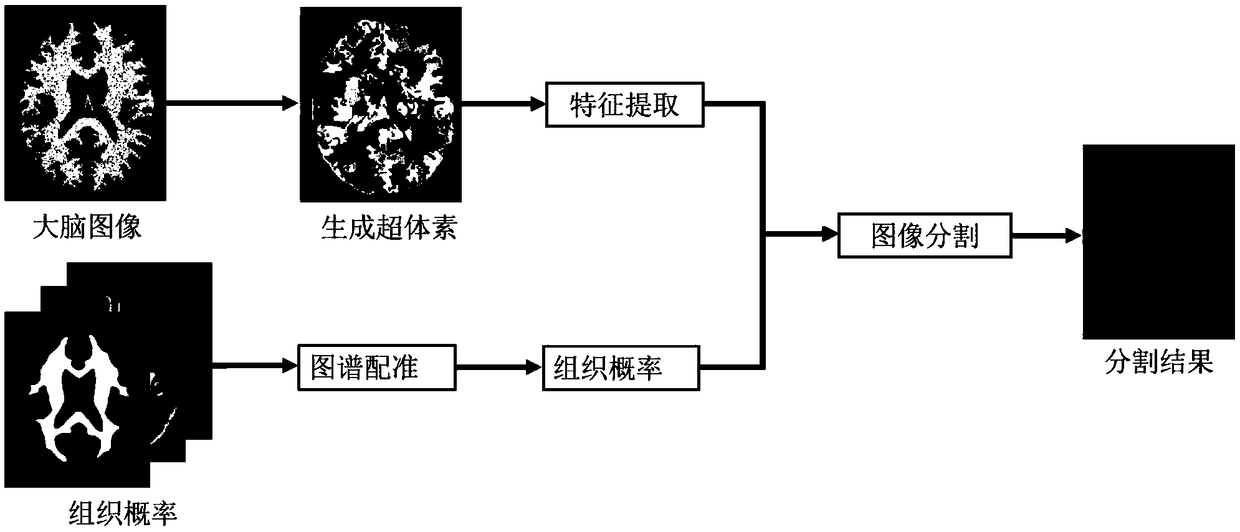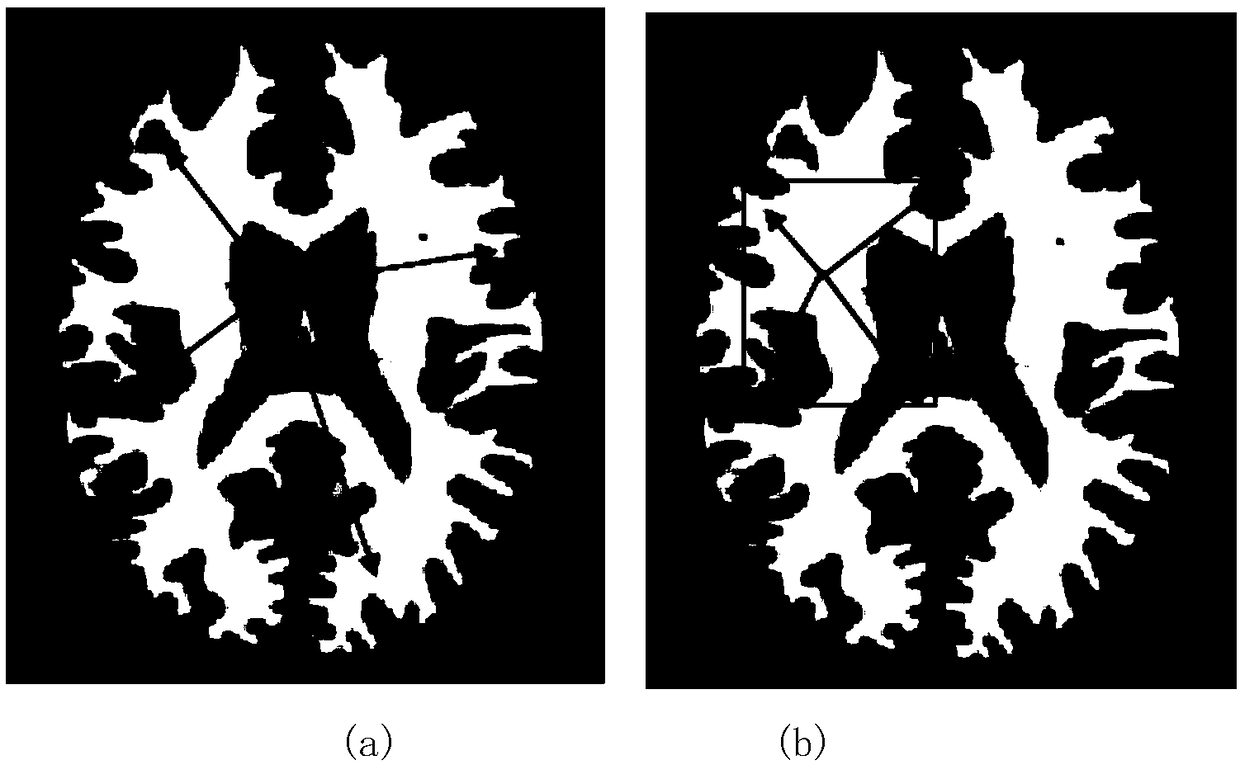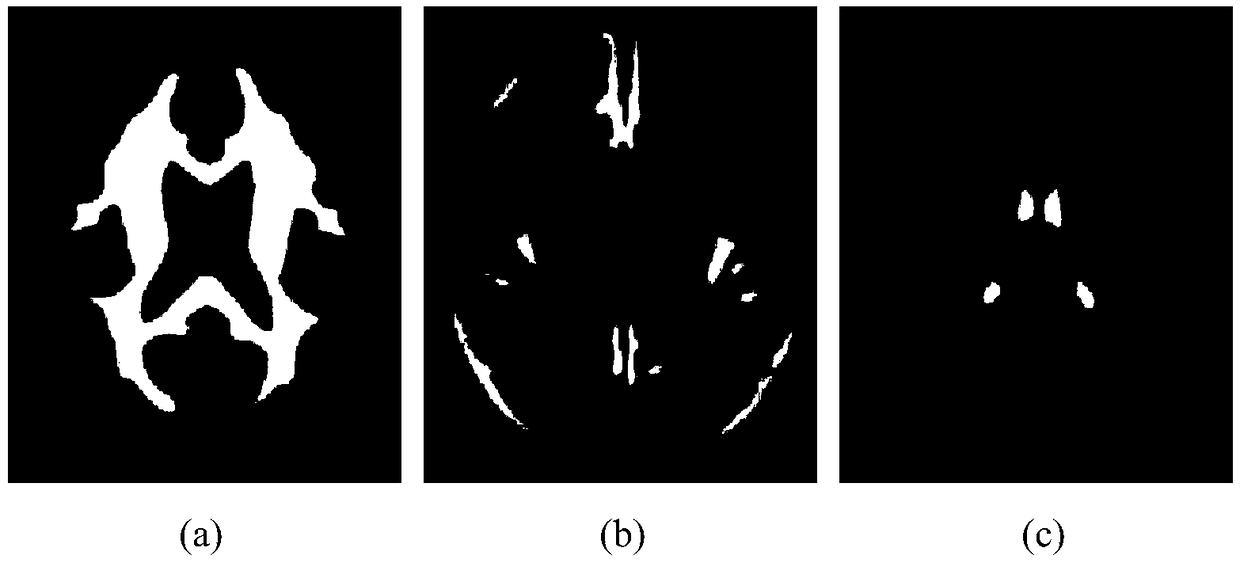A brain tissue segmentation method based on regularized graph segmentation
A brain tissue and tissue technology, applied in the field of brain tissue segmentation and brain magnetic resonance image processing based on regularized graph cuts, can solve problems such as high computational complexity, achieve high efficiency, fast processing speed, and high boundary fit Effect
- Summary
- Abstract
- Description
- Claims
- Application Information
AI Technical Summary
Problems solved by technology
Method used
Image
Examples
Embodiment Construction
[0047] The technical solutions provided by the present invention will be described in detail below in conjunction with specific embodiments. It should be understood that the following specific embodiments are only used to illustrate the present invention and not to limit the scope of the present invention.
[0048] The present invention provides a brain tissue segmentation method based on regularized graph cutting. The process is mainly divided into two parts: First, the supervoxel generation method based on intensity distance and spatial similarity is used to divide voxels into regular ones. Reduce the influence of noise and better fit the supervoxels at the edge of the image; then, combined with the prior knowledge of brain tissue, use graph cuts to cut each supervoxel into specific brain tissue. The specific process of the present invention is as figure 1 As shown, including the following steps:
[0049] Step 1: Generation of supervoxels:
[0050] The present invention uses a su...
PUM
 Login to View More
Login to View More Abstract
Description
Claims
Application Information
 Login to View More
Login to View More - R&D
- Intellectual Property
- Life Sciences
- Materials
- Tech Scout
- Unparalleled Data Quality
- Higher Quality Content
- 60% Fewer Hallucinations
Browse by: Latest US Patents, China's latest patents, Technical Efficacy Thesaurus, Application Domain, Technology Topic, Popular Technical Reports.
© 2025 PatSnap. All rights reserved.Legal|Privacy policy|Modern Slavery Act Transparency Statement|Sitemap|About US| Contact US: help@patsnap.com



